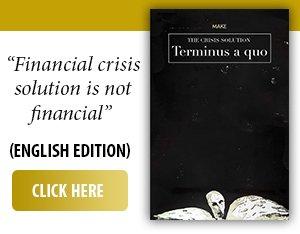The wars in Ukraine and Gaza are causing excitement and concern around the world. The indisputable stars of these military conflicts are the weapons, sent to the involved parties from all areas of the world. Peace is desired, but war is fueled with "fuel". Drones are the new fad in today's wars, but heavy weaponry makes all the difference. In the last hundred years there have been some weapons that have literally written history. The latest news from the two fronts speaks volumes...about the weaponry used in various actions.
Russia's Foreign Ministry said Ukraine used Western missiles, US-made HIMARS, to destroy a bridge over the Seim River, while two more were destroyed in the Kursk region, killing volunteers trying to evacuate civilians, reports Reuters. A British source confirmed to the BBC that Challenger 2 tanks were used in Ukraine's surprise incursion into Russia. On the other front, the United States has criticized Israel's use of American weapons in the Gaza Strip, but without suspending their delivery, failing to conclude that the Israeli military has violated international humanitarian law, according to a State Department report. Israel has used, in an attempt to block the network of tunnels dug by Hamas under the Gaza Strip, a new weapon, the so-called "sponge bombs", an army chemical device that produces an explosion of foam that can block breaches and tunnel entrances , writes The Telegraph. Hamas says it managed to shoot down a quadcopter drone in Jabalya and did so with rifle fire. In addition, he says he also uses a weapon called the Yasin 105. Reports say this is a type of two-stage high-explosive anti-tank weapon that is used with an RPG7 launcher. Hamas used these weapons to target tanks and D9 bulldozers, according to reports from Al-Mayadeen TV. Hamas also uses sniper rifles and mortars, as well as planting explosives in booby traps and tunnels. An entire arsenal of death is produced and spread throughout the world.
• MG-42, AK-47, M1 Garand, they wrote history
In the last century, firearms have played an essential role in global wars and conflicts, and some of them have become symbols of power and efficiency.
Invented in 1942, the MG-42 is one of the most famous machine guns in history, known for its heavy use during World War II. It became a symbol of the German forces due to its extremely high rate of fire of approximately 1,200 rounds per minute. Its reliability and effectiveness on the battlefield made it feared by Allied soldiers. The AK-47, designed by Mikhail Kalashnikov in 1947, is probably the most famous firearm in the world. Widely used in conflicts around the globe, the AK-47 is prized for its simplicity, durability and reliability in extreme terrain conditions. It continues to be one of the most widespread firearms in the world. The introduction of the Glock pistol in the 1980s revolutionized the firearms industry. Made partly of polymers, the Glock is renowned for its reliability, being able to function even in adverse conditions such as underwater or in the presence of sand. It is used by law enforcement and military forces around the world. The Lee-Enfield was the standard rifle of the British Army for more than half a century, being used in both World Wars. This was known for its accuracy and rate of fire, with British soldiers being trained to fire 30 rounds per minute. The M1 Garand was the first semi-automatic rifle widely used by the US military. Its introduction in World War II provided a significant advantage to American soldiers, allowing them to fire quickly and accurately without having to reload after each shot. These weapons are at the same time found in museums, theaters of operations or in the collections of enthusiasts.
• The strength of those from NATO
But the great military powers have huge arsenals. Nobody seriously talks about disarmament anymore. NATO is equipped with some of the most advanced weapons in the world, designed to ensure superiority on the battlefield. Among the most well-known to the general public are: The German Leopard 2 tank and the American M1 Abrams tank, which are the backbone of the NATO ground forces. Leopard 2, with a maximum speed of 68 km/h and a weight of 55 tons, is known for its reliability and power. The M1 Abrams, with a 1,500 HP turbine engine, is renowned for its heavy armor and exceptional mobility. The MIM-104 Patriot anti-missile defense system, produced by Raytheon, is essential to NATO's air defense, being capable of intercepting ballistic missiles and enemy aircraft at considerable distances. HIMARS, a highly mobile artillery missile system, has become crucial in modern conflicts, being able to hit targets at a distance of about 80 km. The F-16 fighter jet has been a mainstay of NATO air forces for decades, being used by numerous countries for air superiority. The F-35, a fifth-generation aircraft, brings advanced capabilities, including radar invisibility and the ability to carry nuclear weapons, securing a central place in NATO's defense strategy. The above are the "stars", but NATO's arsenal is much wider, we present the main pieces: 1. Nuclear Weapons - Intercontinental Ballistic Missiles (ICBM); LGM-30G Minuteman III (USA): A US-deployed ICBM capable of carrying multiple nuclear warheads. Submarine Launched Nuclear Missiles (SLBM); Trident II (D5) (US, UK): A nuclear ballistic missile deployed on the Ohio (US) and Vanguard (UK) class submarines.
1.Strategic nuclear bombers: B-2 Spirit (USA): A stealth bomber capable of carrying both conventional and nuclear weapons. B-52 Stratofortress (USA): A long-range strategic bomber capable of carrying a variety of nuclear weapons.
Nuclear Sharing Systems - B61 Nuclear Bombs (USA): American nuclear bombs stationed in various European countries.
2. Air Force - Fighter and multi-role aircraft, F-35 Lightning II (USA, UK, Italy, Norway, Netherlands): A fifth-generation multi-role aircraft used by several NATO member states.
Eurofighter Typhoon (UK, Germany, Italy, Spain): An advanced multi-role fighter jet. F-16 Fighting Falcon (USA and many other NATO countries): A very light fighter and attack aircraft. Attack and Bomber Aircraft: A-10 Thunderbolt II (USA): A specialized close air support aircraft known for its effectiveness against armored vehicles. B-1B Lancer (USA): A supersonic strategic bomber capable of carrying conventional and nuclear weapons.
3. Ground Forces- Tanks: Leopard 2 (Germany and other NATO countries): One of the most advanced tanks in the world, used by several NATO member states. M1 Abrams (USA): A main battle tank, renowned for its firepower and armor. Armored Vehicles: Bradley Fighting Vehicle (USA): An infantry fighting vehicle widely used by the US forces. Boxer MRAV (Germany, Netherlands): A multi-role armored vehicle, used in various missions.
4. Naval Forces - Aircraft Carriers: USS Gerald R. Ford (USA): The newest aircraft carrier in the Ford class, equipped with advanced technologies. HMS Queen Elizabeth (UK): A modern British aircraft carrier, part of the UK's new class of aircraft carriers. Nuclear attack submarines: Virginia Class (USA): State-of-the-art nuclear attack submarines capable of launching Tomahawk cruise missiles. Astute Class (UK): Nuclear attack submarines used by the Royal Navy. Destroyers and Frigates - Arleigh Burke Class (USA): Destroyers equipped with advanced Aegis anti-aircraft and anti-missile defense systems. FREMM class (Italy, France): Multi-role frigates, used for various missions, including anti-aircraft and anti-submarine defense.
5. Air and Missile Defense Systems - Patriot (USA, Germany, Netherlands and others): A surface-to-air missile system used to defend against ballistic missiles and aircraft. Aegis Ballistic Missile Defense (US and others): A ship-based and land-based missile defense system (in Romania and Poland). NASAMS (Norway, USA): A medium-range surface-to-air missile system used for air defense.
6. Cruise Missile Systems - Tomahawk (USA, UK): A long-range cruise missile capable of hitting land targets with high precision. SCALP-EG/Storm Shadow (France, UK): An air-to-surface cruise missile used by NATO aircraft for long-range strikes.
7. Cyber Capabilities - NATO and its member states have advanced cyber defense and attack capabilities, including specialized teams for cyber warfare and critical infrastructure protection.
8. Special Forces and Asymmetric Warfare - highly trained special forces units, such as the SEALs (US), SAS (UK), and GIGN (France), which are deployed for asymmetric warfare and counter-terrorism operations.
NATO's arsenal is remarkable not only for its diversity and technology, but also for its interoperability between member states, which allows them to operate effectively within common missions. These weapons are only part of NATO's vast and sophisticated arsenal, which continues to evolve to meet contemporary challenges. Both the classic weapons, which made history, and the modern ones, reflect the constant efforts to maintain a strategic advantage on the battlefield.
• Arsenal of Russia
Russia's military arsenal is one of the largest and most diverse in the world, including a wide range of nuclear, conventional and cyber weapons. Here are some of the main weapons and systems in Russia's arsenal:
1. Nuclear weapons; Intercontinental Ballistic Missile (ICBM), RS-28 Sarmat (SS-X-30 Satan 2): One of the most powerful Russian ICBMs, capable of carrying multiple nuclear warheads. RS-24 Yars (SS-27 Mod 2): Mobile ICBM with multiple nuclear warhead carrying capabilities. Submarine-launched nuclear missiles (SLBM), R-30 Bulava: Ballistic missile with nuclear capabilities, launched from Borei-class submarines. Strategic nuclear bombers: Tupolev Tu-160 (Blackjack): The world's largest supersonic bomber capable of launching nuclear weapons.
2. Hypersonic Missiles - Vanguard: A hypersonic gliding vehicle capable of carrying a nuclear warhead and capable of reaching speeds in excess of Mach 20. Kinzhal (Dagger): An air-launched hypersonic missile capable of hitting targets over 2,000 km away.
Tsirkon: A ship-launched hypersonic missile with an estimated speed of Mach 9.
3. Land Forces - Tanks: T-14 Army: New generation tank, equipped with advanced protection and weaponry technology. T-90: One of the most used tanks in the Russian armed forces, constantly modernized. Armored vehicles; BMP-3: An armored infantry vehicle equipped with a 100 mm cannon and a 30 mm machine gun. BTR-82: A widely used armored personnel carrier.
4. Air Defense Systems. S-400 Triumf: One of the most advanced anti-aircraft missile systems in the world, capable of intercepting aircraft, ballistic missiles and cruise missiles at distances of up to 400 km. S-500 Prometey: A more advanced version of the S-400, capable of intercepting targets even in space.
5. Naval Forces - Nuclear Submarines: Borei Class: Strategic nuclear submarines equipped with Bulava missiles. Yasen class: Attack submarines, extremely silent and equipped with cruise missiles. Destroyers and frigates: Admiral Gorshkov-class frigates: Modern ships equipped with Kalibr missiles and advanced defense systems.
6. Cruise Missile Systems, Kalibr: Cruise missiles launched from ships, submarines or even from airplanes, with a range that can reach 2,500 km. Iskander-M: A short-range ballistic missile system capable of carrying both conventional and nuclear warheads.
7. Cyber Weapons Russia is known for its advanced capabilities in the field of cyber warfare, having specialized units in cyber attacks, espionage and disinformation operations. These are just some of the major weapons and systems in Russia's arsenal that allow it to be one of the leading military powers globally.
The data about the armament presented above were obtained from open sources such as nato.int, wikipedia.com, dw.com, eng.mil.ru, gfsis.org.ge, politico.eu.
As can be seen, the offer in terms of armament is much more varied than we would like.
















































